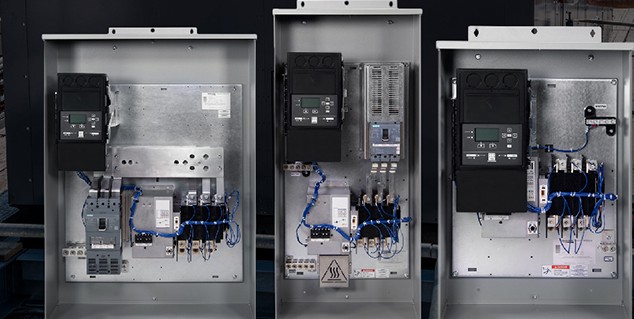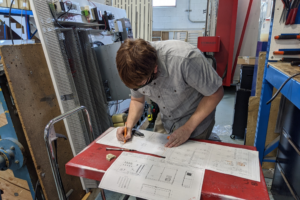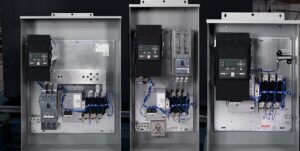
Different types of Automatic Transfer Switch
There are a few different types of automatic transfer switches (ATS) available on the market today. Each one has their pros and cons and will fit better with certain applications than others. So how do you know which one is best for you? In this article we will go through four of the most common types of ATS’s and their applications.
How Do Transfer Switches Work?
There are three steps in a typical transfer sequence:
- Normal utility power source fails.
- The transfer switch transfers the load to your emergency power source when the power from the generator or backup utility feed is stable and within certain voltage and frequency tolerances. Depending on your needs, the transfer process is self-acting or manually-initiated. (In this article we are discussing self-acting switches.)
- The transfer switch returns the load from the emergency power source to the normal power source when utility power is restored.
Break-Before-Make (Open Transition)
This type of transfer switch will break contact with the main (utility) power source before it establishes a connection with the backup/emergency (generator) power source. With these kinds of switches you get a brief, but total loss of power for no more than two seconds. These switches are mainly used in applications where a two second delay will not cause large issues for your business or a detriment to human safety.
Make-Before-Break (Closed Transition)
These types of transfer switches will maintain contact with both power sources until a stable connection is established to the backup power source. Connection between both sources is usually held for roughly a tenth of a second, so there is no real danger of back-feeding or harmful overlap. These switches are usually used in applications where even the briefest loss of power will cause harm to business or human safety; such as large-scale commercial businesses, hospitals, data centers, etc.
Delayed Transition (Center Off)
These transfer switches are used in applications in which large inductive loads result in large inrush currents. There is a purposeful delay before the switch from utility to generator power (and vice-versa). This delay helps to act as a fail-safe against power surges that can be common among heavy industrial equipment when powered on and off.
Solid State
These switches rely on transistor technology and sub-cycle transfers. There are no moving parts on this switch. Although there is technically a “break” in load current with these type of switches, the quick switching speed (5 milliseconds) prevents adverse effects from under voltage or interruption to sensitive equipment. These switches are used in applications where power control is a must, such as light dimming, motor speed control, etc.
Got More Transfer Switch Questions? We Can Help!
Call 800-595-5315 Or Connect With Our Expert Technicians Here:
Other Articles
- Local University Uses EMC VFDs to Keep Facilities Running
- Power Factor Correction
- Which Type of Automatic Transfer Switch Will Work Best for Me?

Craig is the Vice President of Engineering at Energy Management Corporation. He is a Professional Engineer (PE) and carries over 30 years of experience in the world of electrical automation. Besides amassing an impressive amount of knowledge in his magnificent brain, he is also a Master Scuba Diver (MSD), a performing magician, and a professional DJ. Truly a man of many talents.





